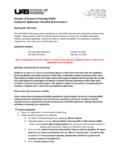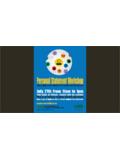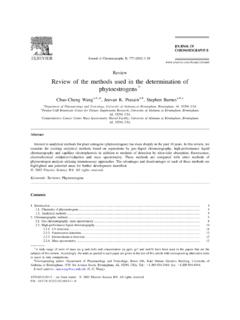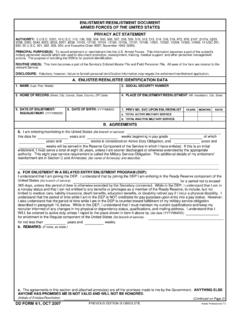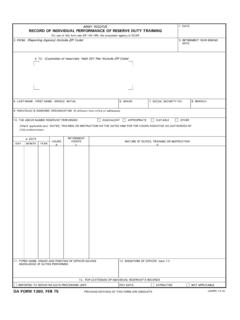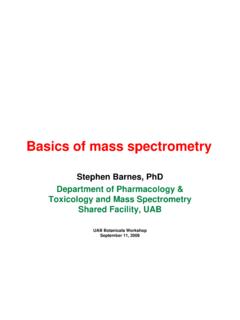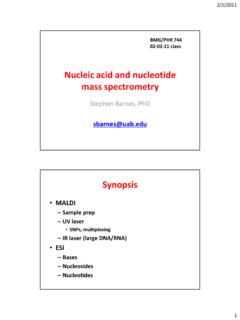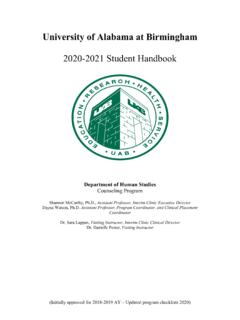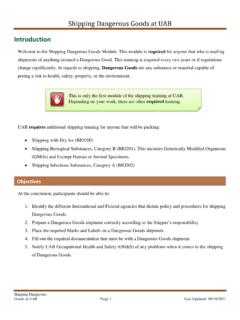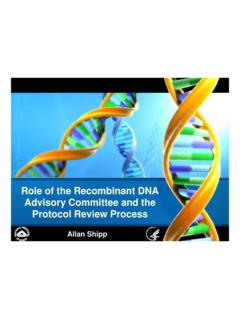Transcription of The Gelsinger Case - UAB
1 Robert Stein brook The Gelsinger case Background The death of Jesse Gelsinger in September 1999 is one of the defining cases in the recent history of research with humans. Gelsinger , 18, died during a gene transfer experiment at the University of Pennsylvania School of Medicine.! His death~the first directly attributed to gene transfer-raised profound ques-tions about the protection of patients in this high-profile research field, as well as in other clinical studies. It also raised questions about adherence to research protocols, the reporting of adverse events, informed consent, and financial conflicts of interest. It shook the confidence of the public and the federal government in the competence and ethics of clinical researchers and the institu-tions where they work, and led to efforts to improve the protection of research participants.
2 Although the terms gene transfer and gene therapy are often used interchangeably, gene transfer is more precise. Gene transfer refers to the transfer to a person of recombinant DNA, or the transfer of DNA or RNA derived from recombinant DNA. The aim is to modify or manipulate the expression of a gene in the body or to change the biological properties of cells. Although the promise of gene transfer is great, progress has been slow. A 1995 review of the investment in the field by the National Institutes of Health (NIH) advocated caution: "Significant problems remain in all basic aspects of gene therapy. Major difficulties at the basic level include shortcomings in all current gene transfer vectors and inadequate understanding of the biological interaction of these vectors with the host.
3 ,,2 As of February 2000, several months after Gelsinger 's death, more than 4,000 patients had participated in gene transfer studies. 110 Of the 372 clinical trials that were registered with the NIH, 89% were Phase I studies of safety and For many years, the public and scientists have been concerned about the potential environmental and infectious disease risks of recombinant DNA technology. This is one reason that the federal government has treated gene transfer studies differently from other clinical re-search. Extensive data about all trials registered with the NIH are publicly available-far more than for most other studies. Inves-tigators who are funded by the NIH or who conduct their work at institutions that receive NIH support for any type of recombinant DNA research must comply with specific NIH gUidelines.
4 In ad-dition to this, a recombinant DNA advisory Committee (RAC) was established within the NIH in 1974. The RAC is a public forum for discussion of novel and substantial issues related to gene transfer trials, including the review of specific protocols. Although the guidelines and the specific duties of the RAC have changed over time, it has a critical role in the oversight of this The Food and Drug Administration (FDA) also regulates clinical gene transfer trials.. Gene Transfer for Ornithine Transcarbamylase Deficiency Ornithine transcarbamylase (OTC) deficiency is a recessive X-linked autosomal genetic defect that interferes with the metabo-lism of ammonia by the liver. Although the mutations that,lead to this enzyme deficiency are rare-affecting 1 in 40,000 to I in 80,000 people-they are the most common of the inborn errors of urea synthesis.
5 Correction of this single gene enzyme deficiency has been viewed asa model for gene transfer directed at the liver5 The reason is that restoration of the enzyme activity should treat the disorder, as has been demonstrated by treatment with liver Gene transfer for OTC deficiency has been stu-died in the sparse fur mouse, which is deficient in the enzyme. Studies in this animal model suggest that the gene defect can be corrected. 1 People with OTC deficiency can develop profound hyper-ammonemia. Excessive levels of ammonium ion in the brain can lead to life-threatening encephalopathy, coma, and brain damage. Complete deficiency usually leads to death during infancy. Without a liver transplant, only about half of those born with OTC deficiency will survive to age 5, and many survivors have pro-found mental impairment.
6 For people with partial enzyme defi-ciency, a low protein diet supplemented with oral medications (sodium benzoate and sodium phenylacetatejsodium phenylbu-tyrate) can be used to minimize the risk of complications or death. Such treatment eliminates excess urea and precursors of ammonia. However, adherence to diet and medical therapy is difficult, and only partially effective. Background to the Research Study at the University of Pennsylvania A chronology of events leading up to and following Gelsinger 's death is shown in Table In 1993, James M. Wilson was recruited to the University of Pennsylvania from the University of Michigan. At the time of Gelsinger 'S death, Wilson was widely considered to be one of the leading gene transfer researchers in the world. He was director of the Institute for Human Gene Therapy and professor and chair of the Department of Molecular and Cellular Engineering in the university's School of Medicine.
7 In 1992, while working in Michigan, Wilson was a founder of Ge-novo, Inc., which had the rights to market his discoveries related to gene transfer. Wilson held patents related to the use of vectors derived from the adenovirus for gene transfer. There were many financial links between Genovo, whose principal offices were in a Philadelphia suburb, Wilson, the In-stitute for Human Gene Therapy, and the University of Pennsyl-vania. By 1999, Genovo provided more than $4 million a year to the institute, a substantial portion of its budget. Wilson and his immediate family had a 30% nonvoting eqUity stake in Genovo; and the University of Pennsylvania had a eqUity stake. 7 Other shareholders included past and present employees of the university and the institute. In the late 1990s, Penn was aggres-Sively seeking to profit from the discoveries of its professors.
8 The Philadelphia InqUirer quoted the managing director of Penn's Center r, lr Technology Transfer: "For years, Penn wasn't even in the game. Now we're in the game and we're looking for some home runs"s (see Chapters 68-71). In December 1994, Penn's Centerfor Technology Transfer had "fficially requested that the Conflict of Interest Standing Com-mittee at the University of Pennsylvania Medical Center review \Vilson's involvement with Genovo. The committee had the au-i hority to review the case and to make recommendations for potential conflicts of interest. The committee considered the \ :lse of great importance and conducted a detailed review. For \'xample, according to the minutes of the committee's February 6, i ()ll,), meeting, many comments and questions were considered. The Gelsinger case 111 Members were concerned that Wilson's multiple roles would "conflict" with his responsibilities at Penn and "create conflicts" for the medical school in allocating resources or implementing ethical and academic poliCies.
9 According to the minutes, "Since Dr. Wilson's research efforts will be directed towards the solution of a problem in which he has a financial interest in the outcome, how can Dr. Wilson assure the University that he will not be conflicted when making decisions that could have an impact on either Genovo, Biogen [another biotechnology company that had invested in Genovo], or the further development of his intellectual property?" Another question appeared in the draft version of the minutes, but not in the final version: "How can Dr. Wilson and the University avoid liability for damages if a patient died from any products produced or studied at the University?" The Conflict of Interest Standing Committee recognized the potential conflicts of interest involving Wilson's commitments to Genovo and to the University of Pennsylvania.
10 It also recognized that his research program could lead to important medical ad-vances that might .benefit the public. In 1995, it did not seek to end his financial arrangements with the company. Instead, it re-commended actions to manage the conflicts by reducing his managerial and scientific controL These included making Wilson's stock nonvoting and prohibiting him from being a member of the company's scientific advisory board. The Research Study Between 1997 and 1999, Gelsinger and 17 other subjects partici-pated in the clinical protocol, " recombinant Adenovirus Gene Transfer in Adults With Partial Ornithine Transcarbamylase Defi-ciency. ,, Wilson was a coinvestigator and the sponsor of the re-search. His main collaborators were Steven E. Raper, a surgeon at the University of Pennsylvania, who was the principal investigator, and Mark L.
